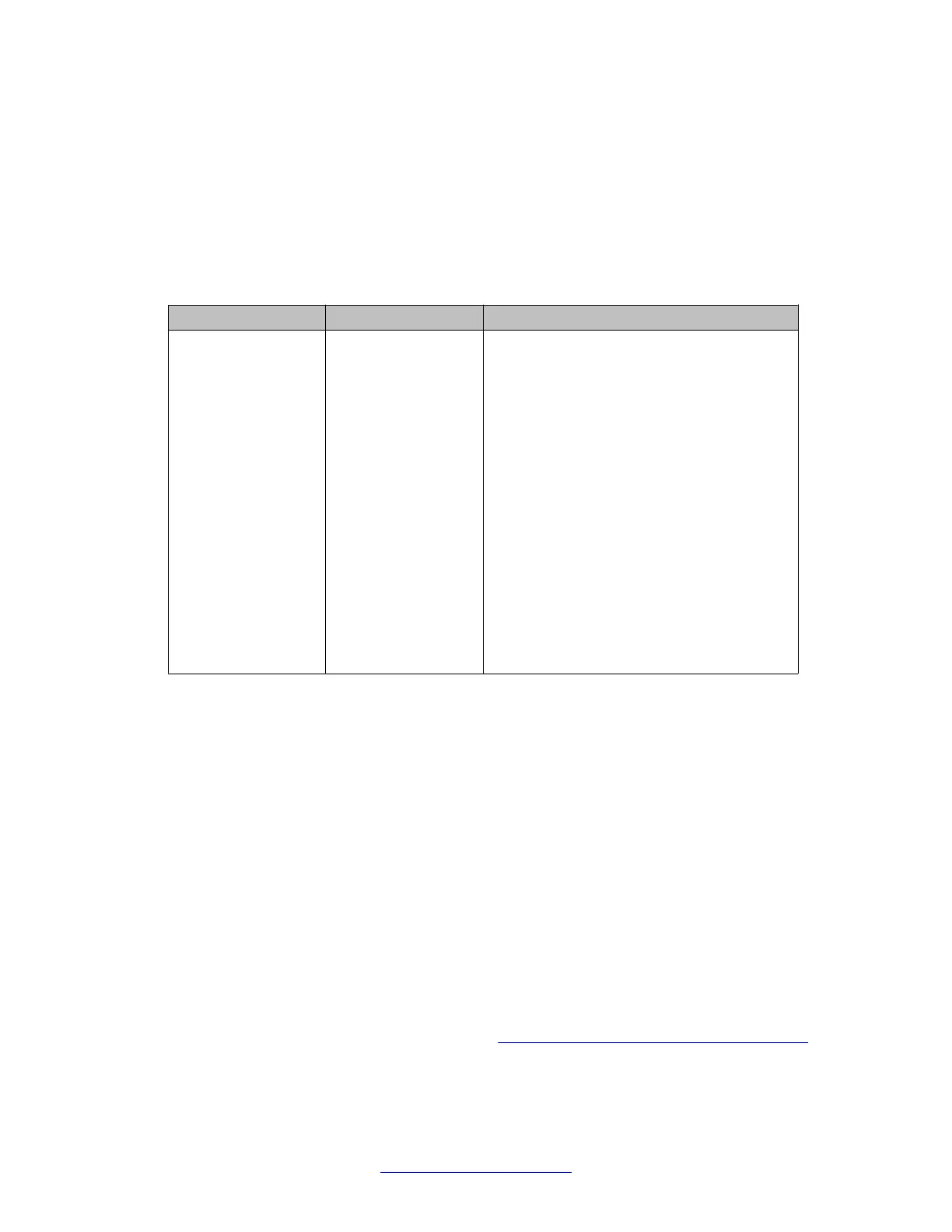There is no error report for the error rates below 10
-6
(10xN2) as such rates are considered
satisfactory.
Program group I thresholds
To set the LD 73 Group I thresholds, use the following commands.
Table 73: LD 73 - Program group I thresholds
Prompt Response Description
REQ CHG Request a Change
TYPE PRI2 Primary Rate Interface 2
FEAT LPTI Loop Timer
...
BPV N1 N2 Bipolar Violation thresholds Default: 128 122
CRC N1 N2 Cyclic Redundancy Check thresholds
Default: 201 97
FBER N1 N2 Frame Bit Errors Default: 28 1
...
OOS1 1 - 60 M Out-of-Service Threshold time Default: 15
NNC1 1 - 60 M No New Calls Threshold time Default: 15
MNT1 1 - 60 M Maintenance Threshold time Default: 15
Frame slips
Digital signals must have accurate clock synchronization for data to be interleaved into, or
extracted from, the appropriate timeslot during multiplexing and demultiplexing operations.
A
frame slip is defined (for 2.0 Mb links) as the repetition or deletion of the 256 data bits of a
CEPT frame due to a sufficiently large discrepancy in the read and write rates at the buffer
(clocks are not operating at exactly the same speed).
When data bits write (add) to a buffer at a slightly higher rate than they read (empty), sooner
or later the buffer overflows. This is called slip-frame deletion.
In the opposite situation, when data bits write (add) to a buffer at a slightly lower rate than they
read (empty), eventually the buffer runs dry or underflows. This is also called slip-frame
repetition.
A 2.0 Mb PRI contains a buffer large enough to contain two full frames (256 x 2 = 512 bits),
and is normally kept half full (1 frame). See
Table 74: Performance impact of one slip on
page 153 for the impact of one slip on various types of data.
2.0 Mb PRI maintenance
152 ISDN Primary Rate Interface Maintenance November 2011
Comments? infodev@avaya.com

